SUMMARY
PREVALENCE: Extremely rare
ACTIVE PERIOD: Crepuscular and nocturnal
KEY ID FEATURES: Bright yellow top of head with high contrast yellow and black markings on face, reddish brown shell with three longitudinal stripes, pink skin and black plastron (shell on under belly)
BEHAVIOR: Actively hunt in evening and early morning around mountain streams, highly capable rock climbers and also extremely adept on land often resting and burrowing in leafy forest floors
SIZE: Medium - 10 inch shell when mature
IUCN: CR - Critically Endangered
OTHER: Poached for chinese medicine and pet trades
QUICK ASSESSMENT 0-10
GALLERY
IMPORTANT: Most turtle species in Hong Kong are poached for both the Chinese Medicine and pet trades. You should never reveal location of encountered turtles on social media to reduce the ability of poachers to effectively hunt these extremely vunerable animals.
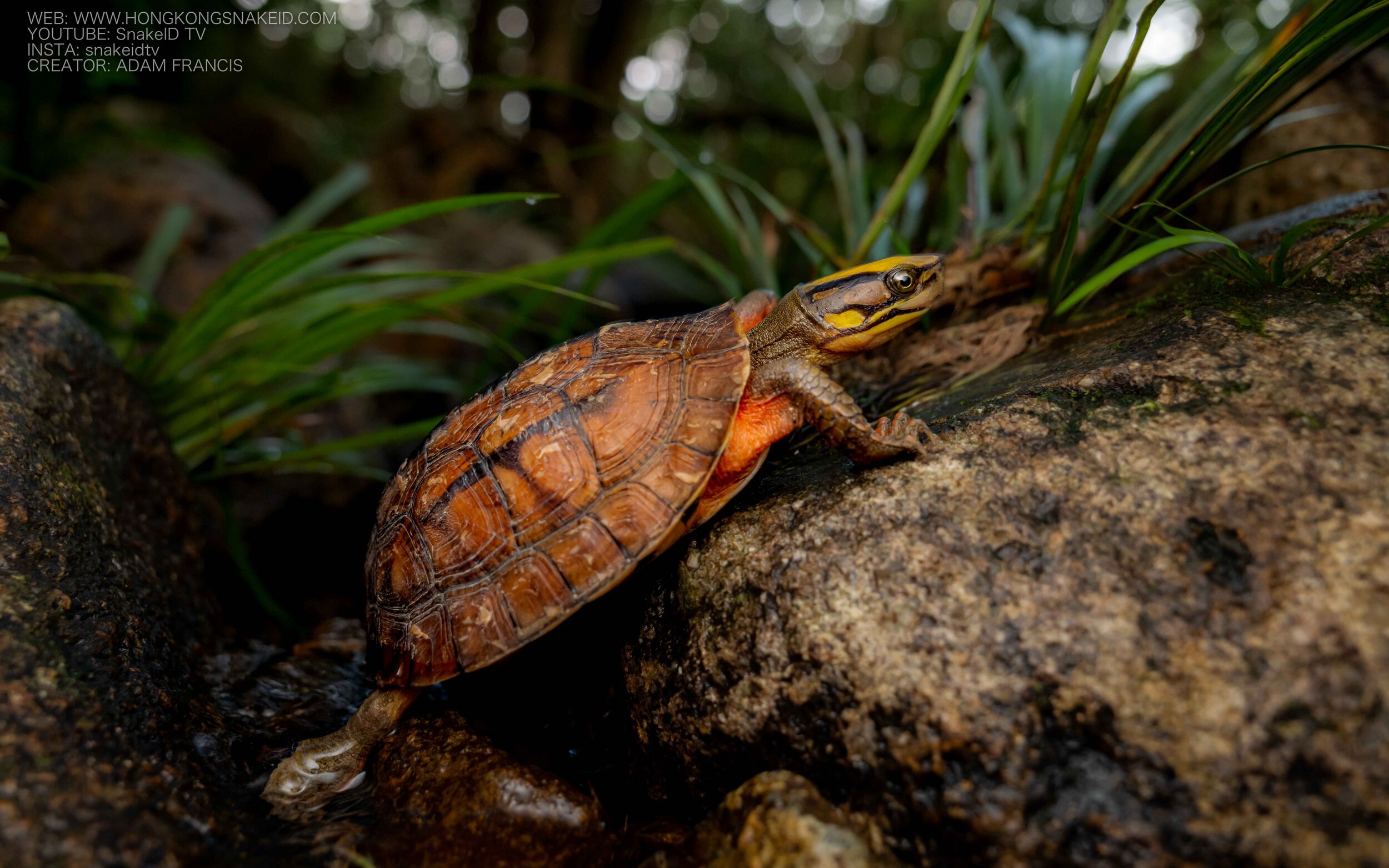
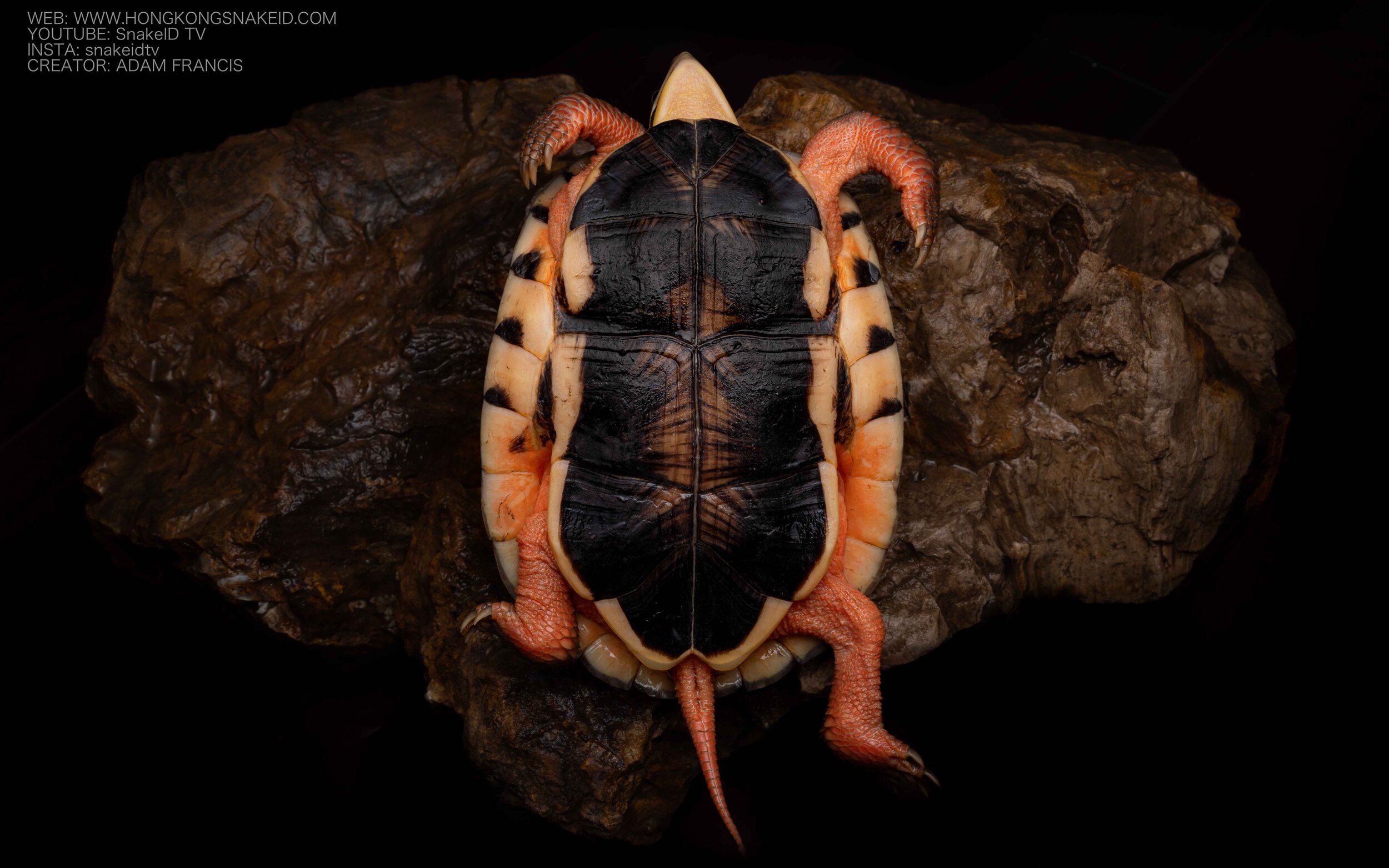
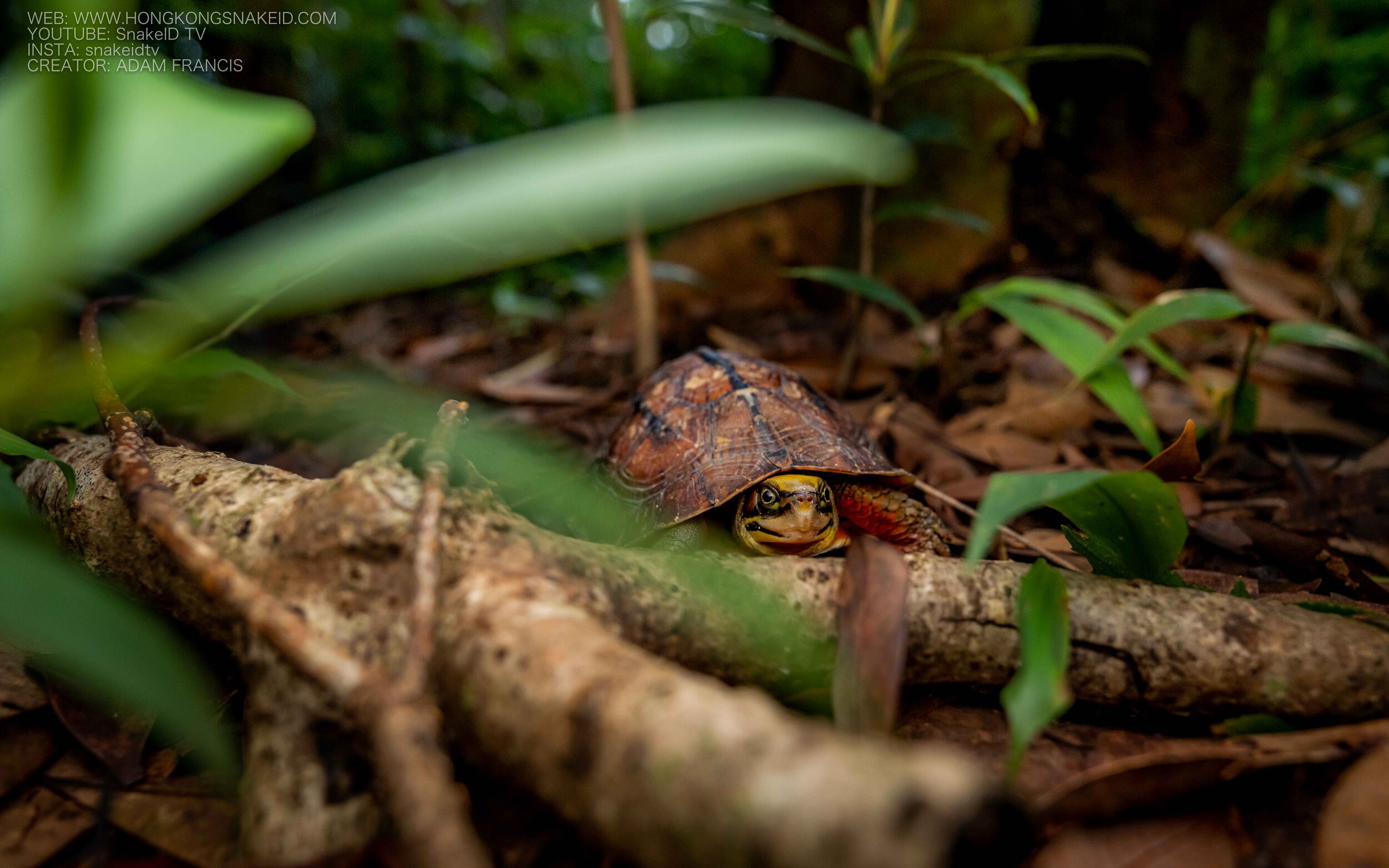
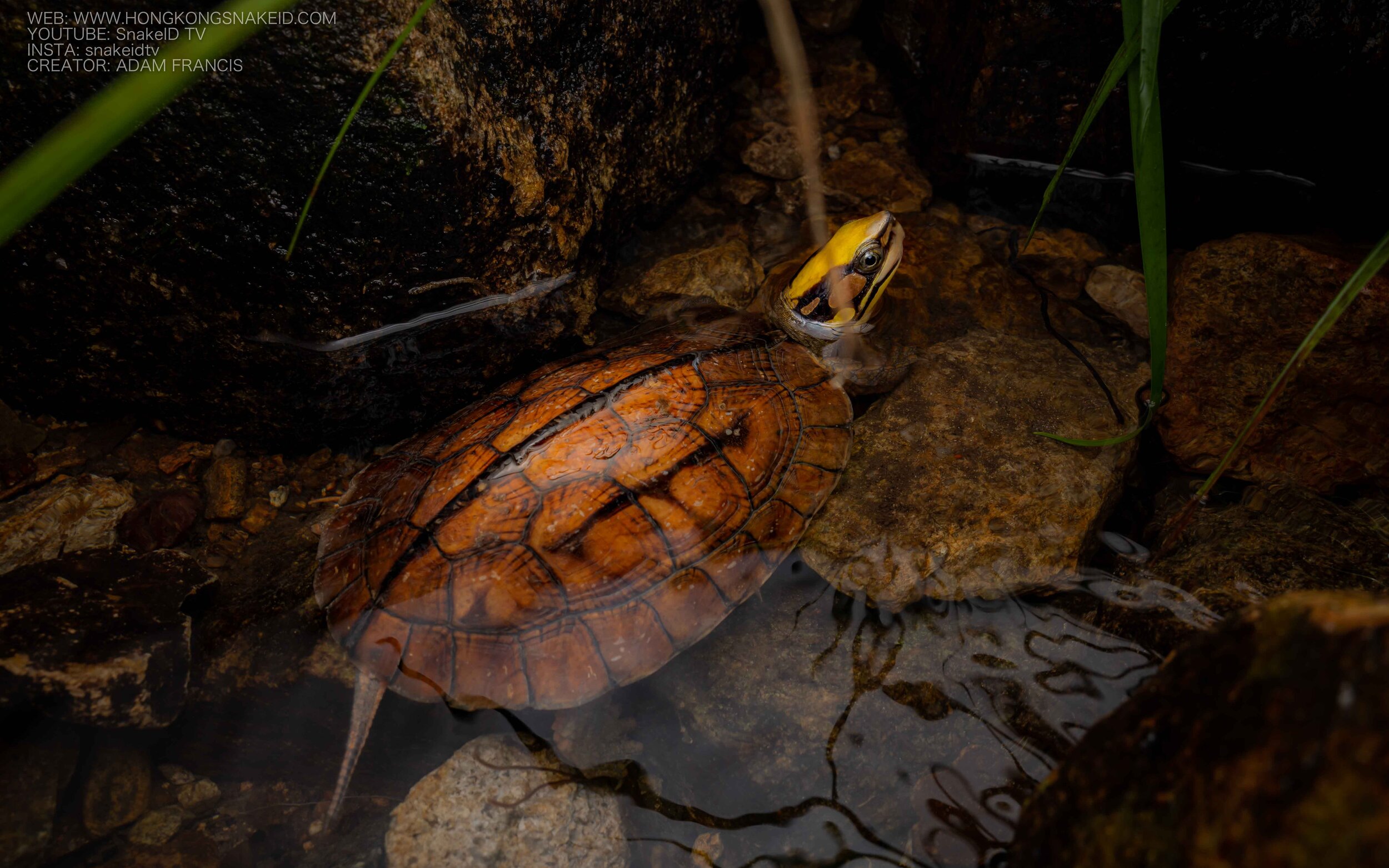
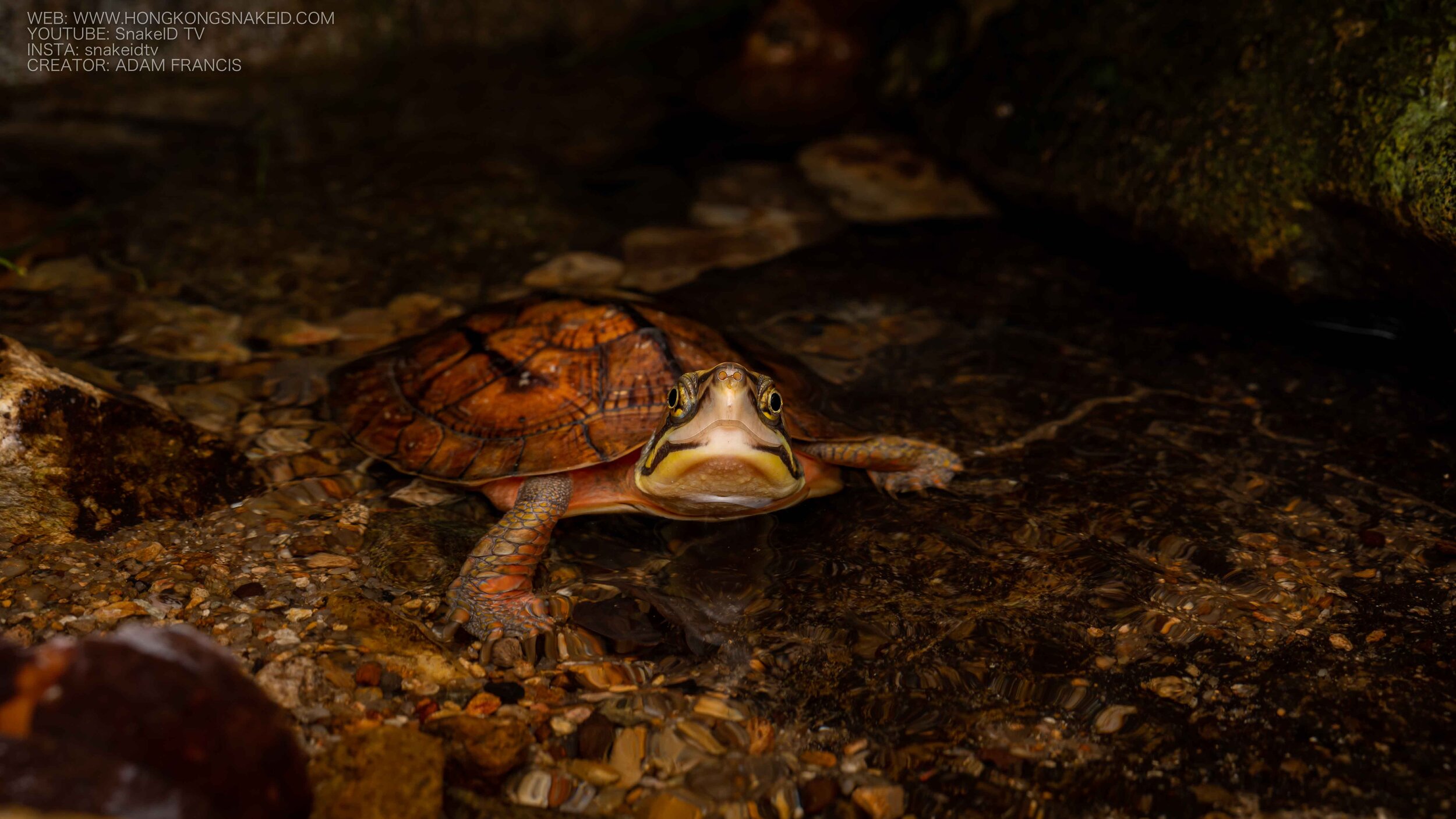
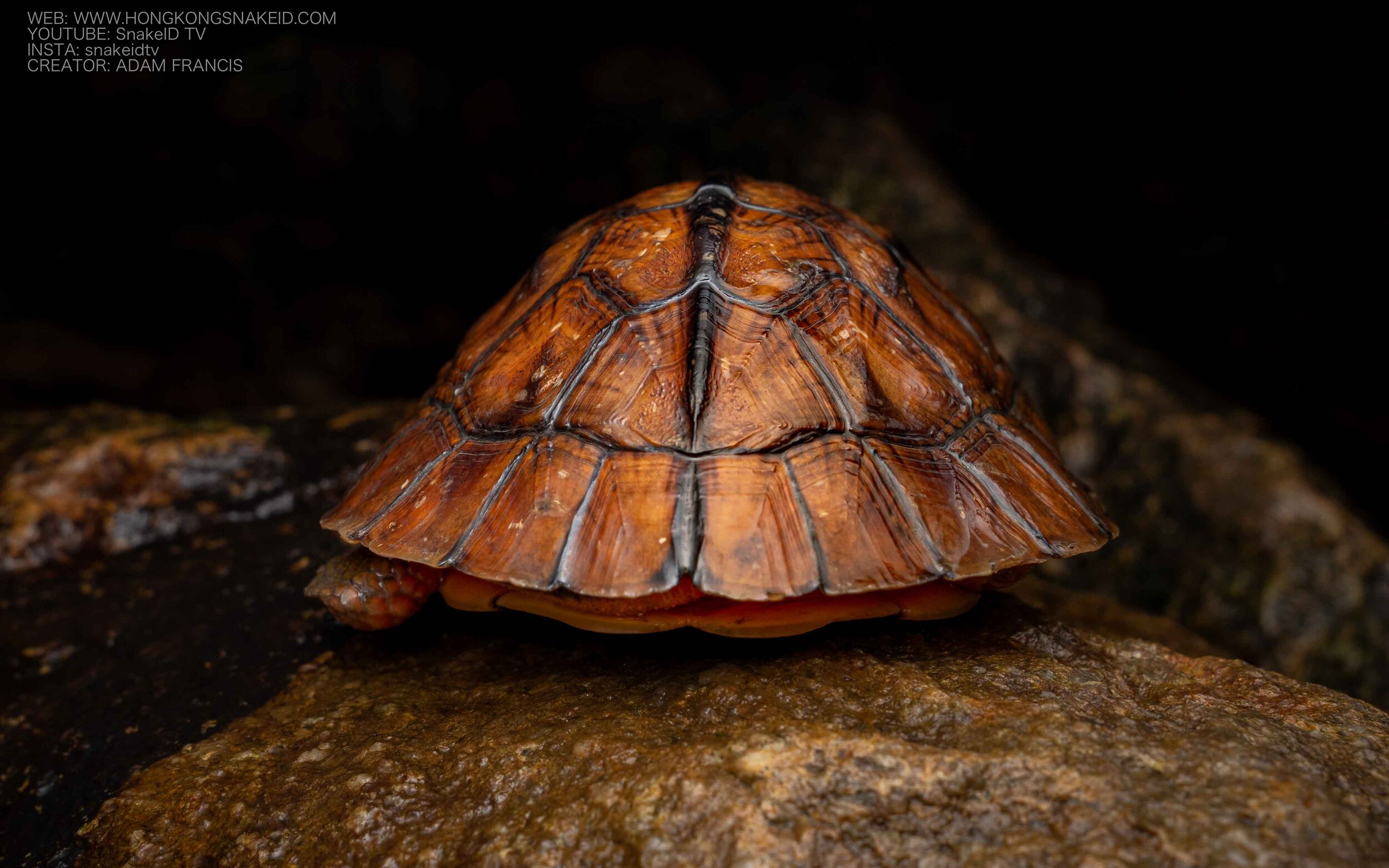
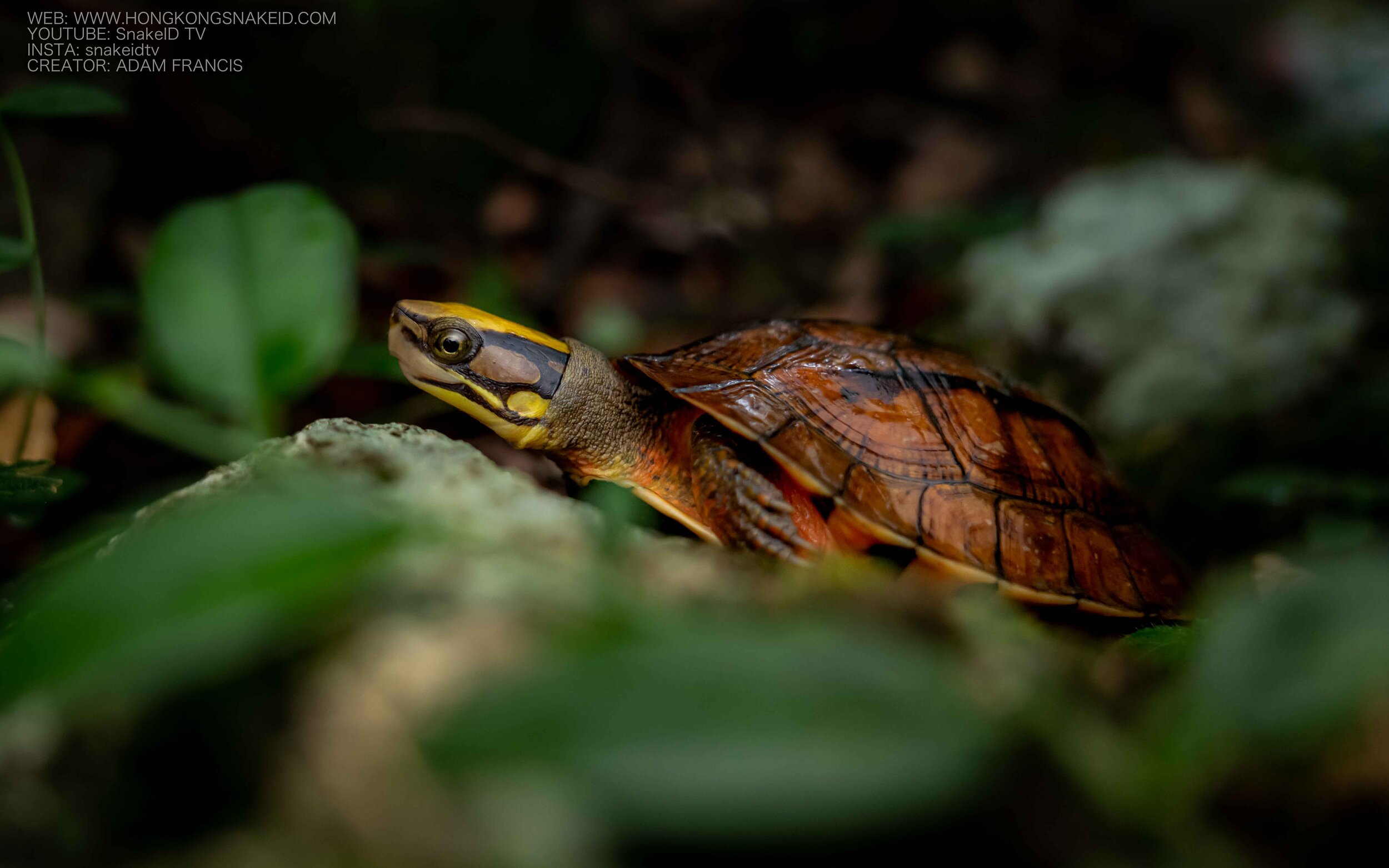
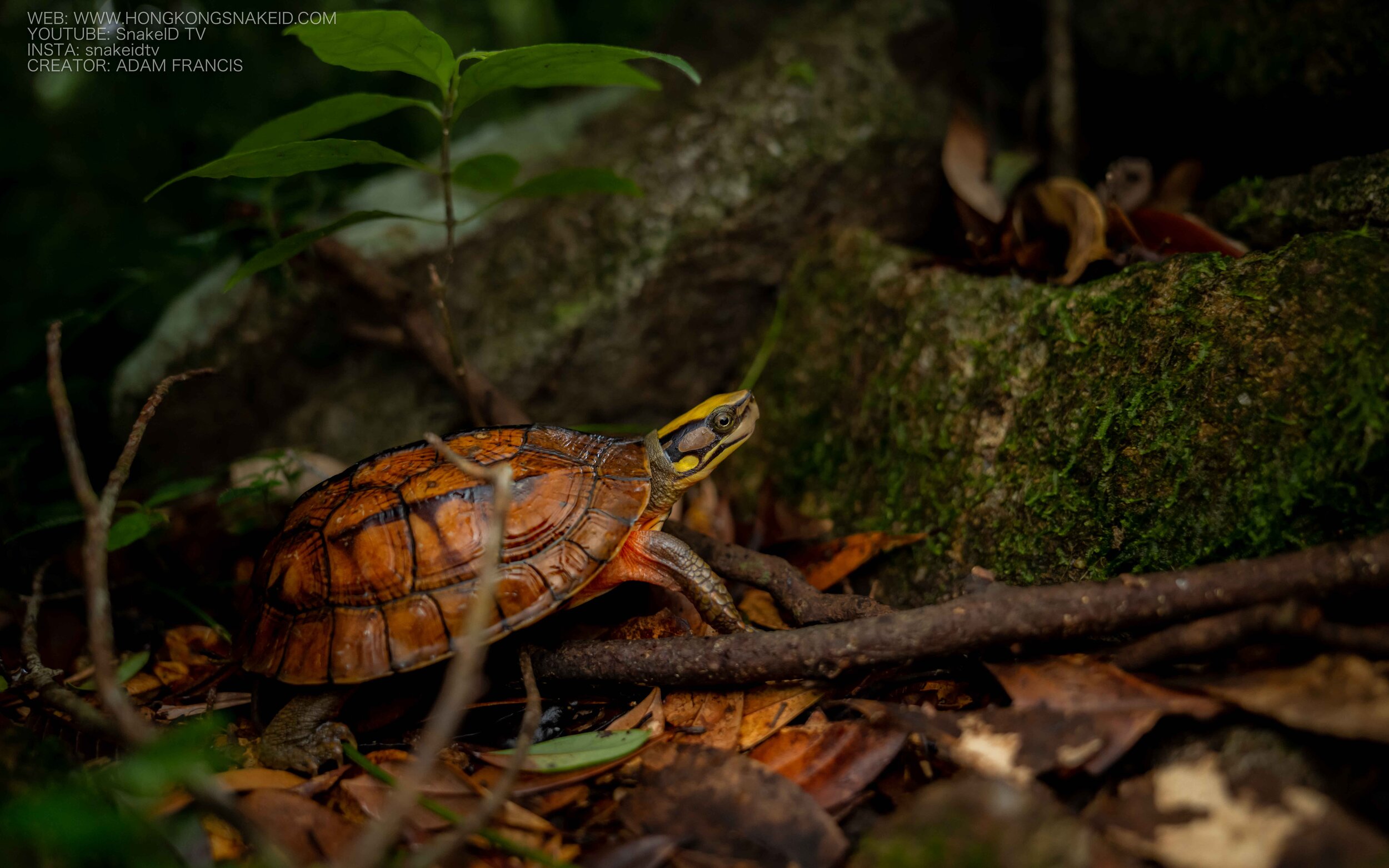

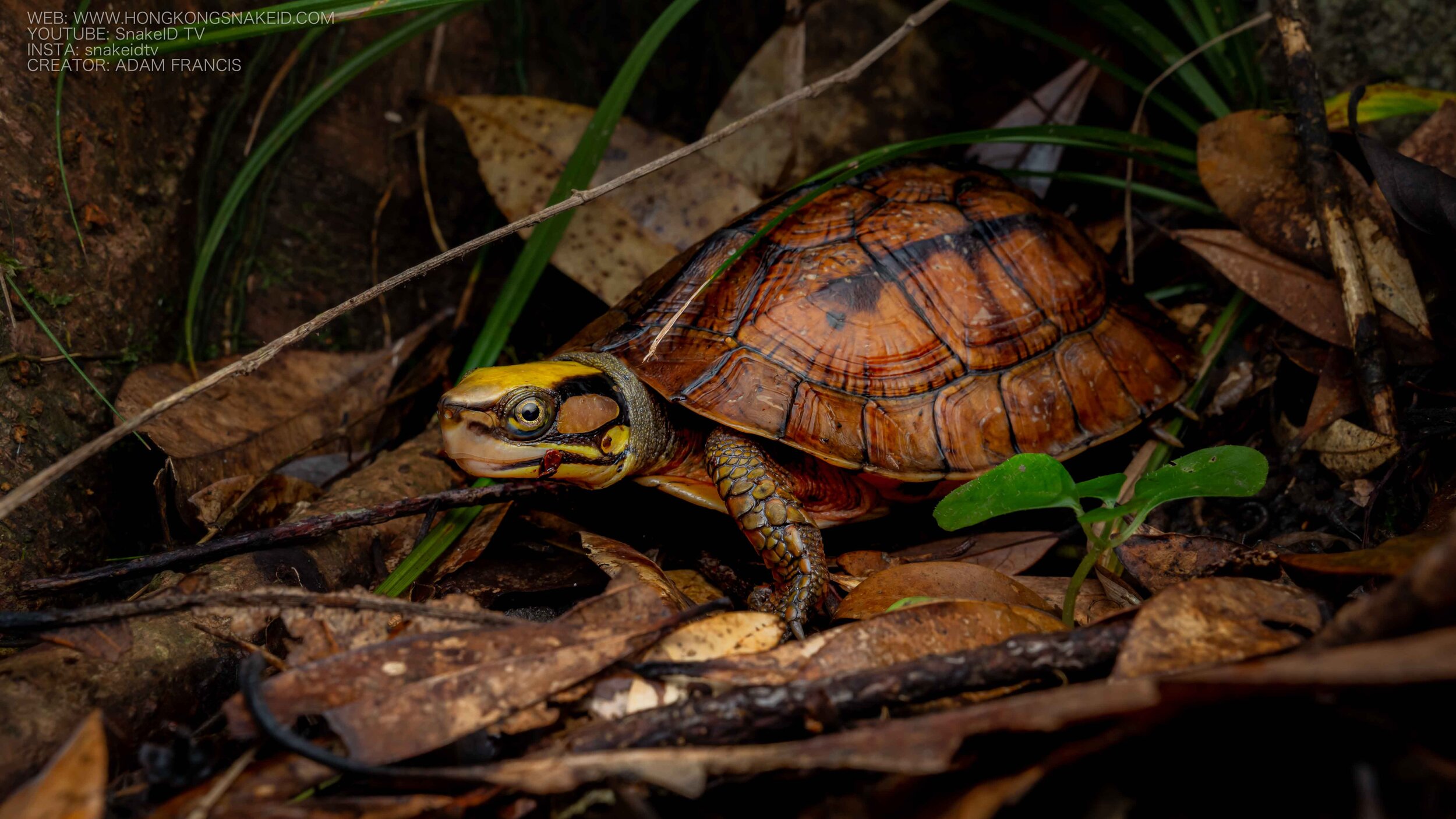
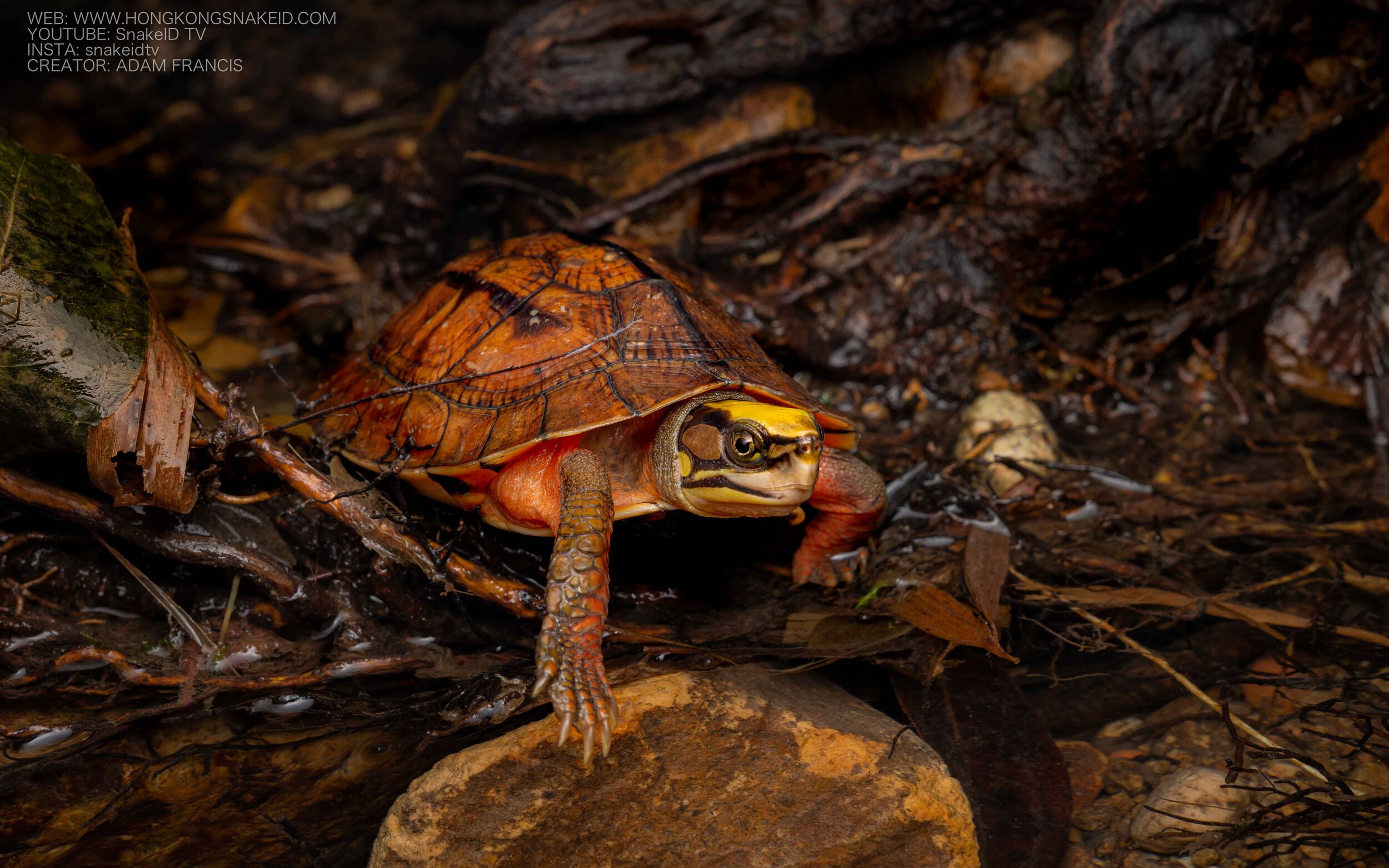
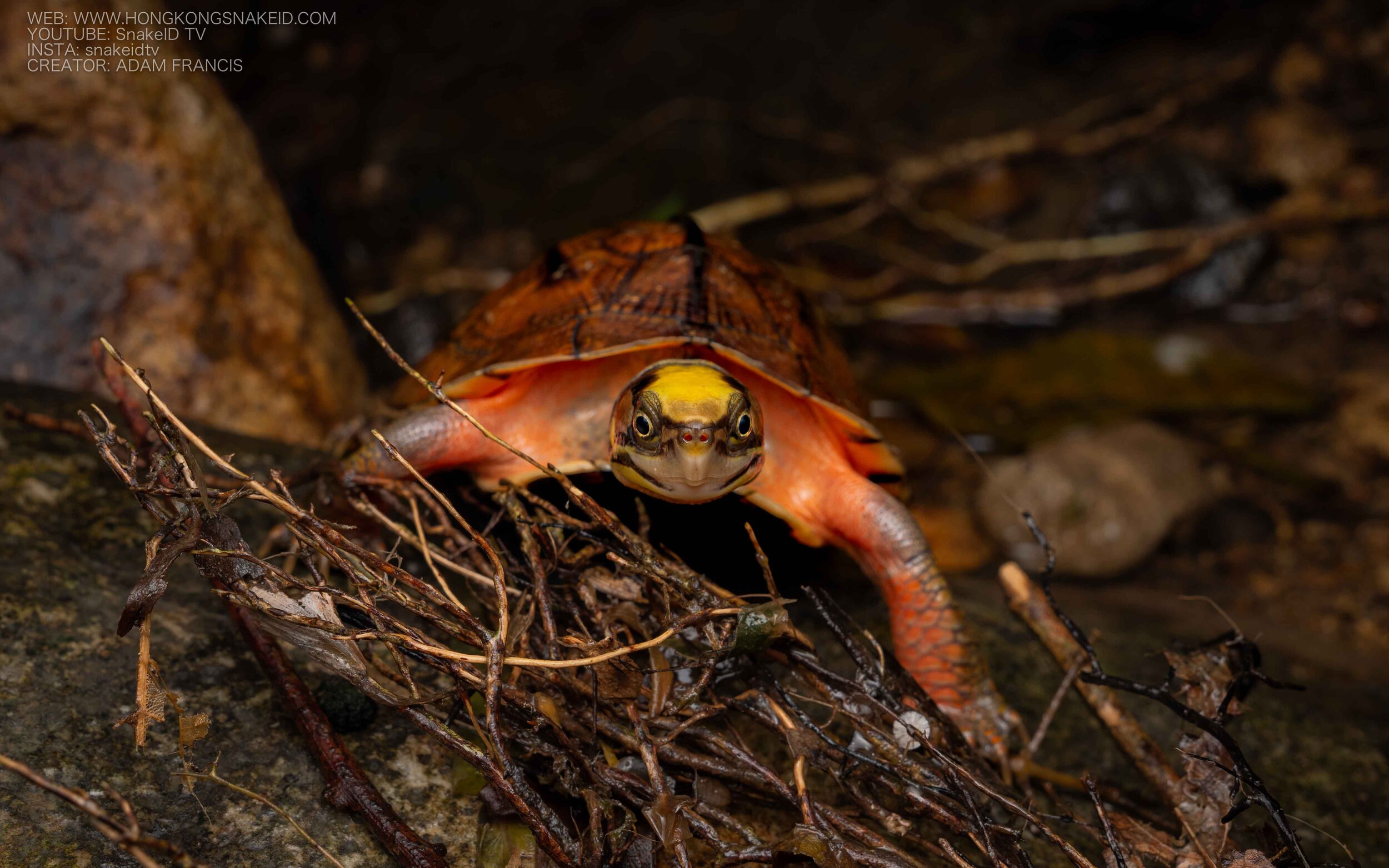
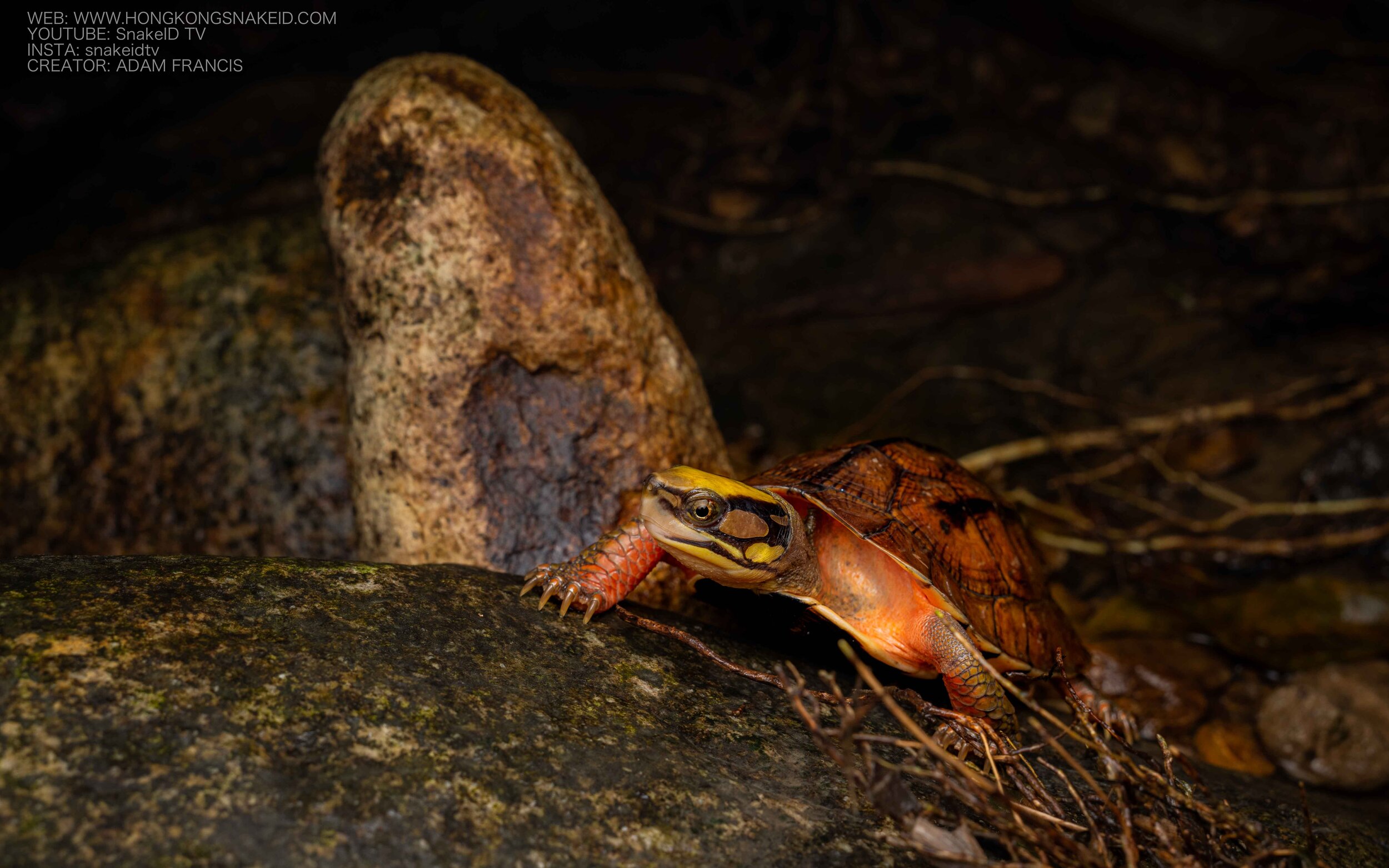

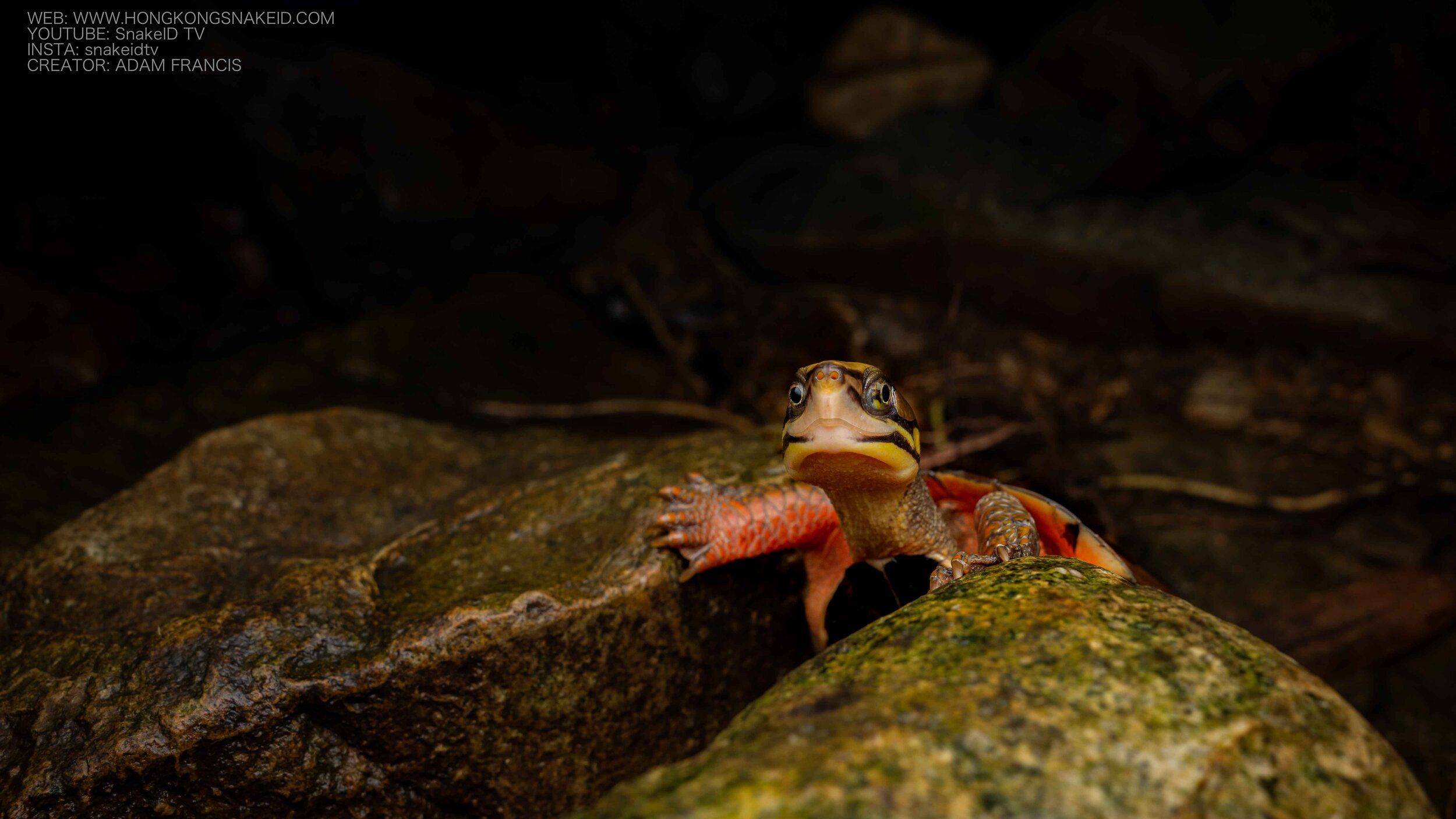
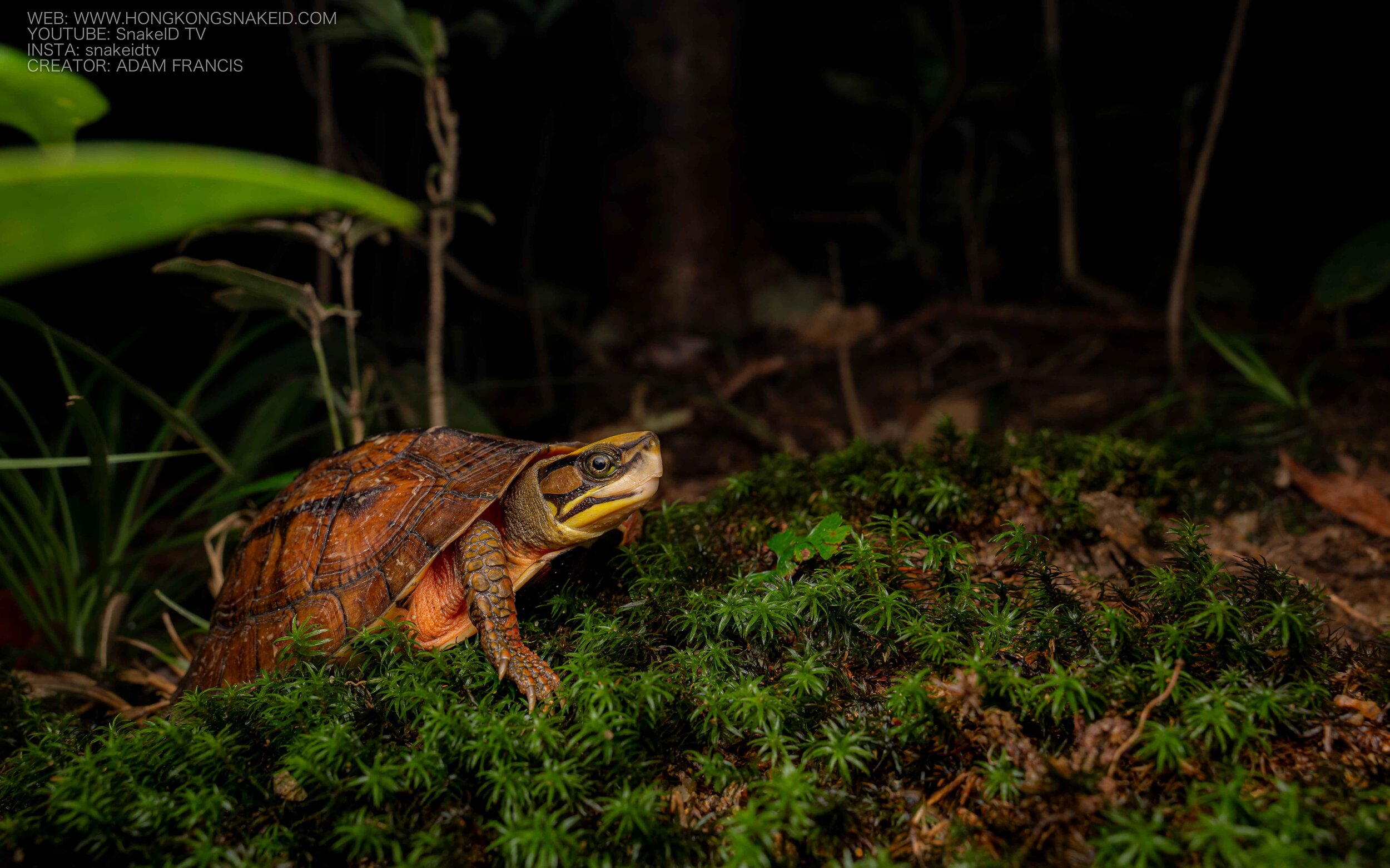
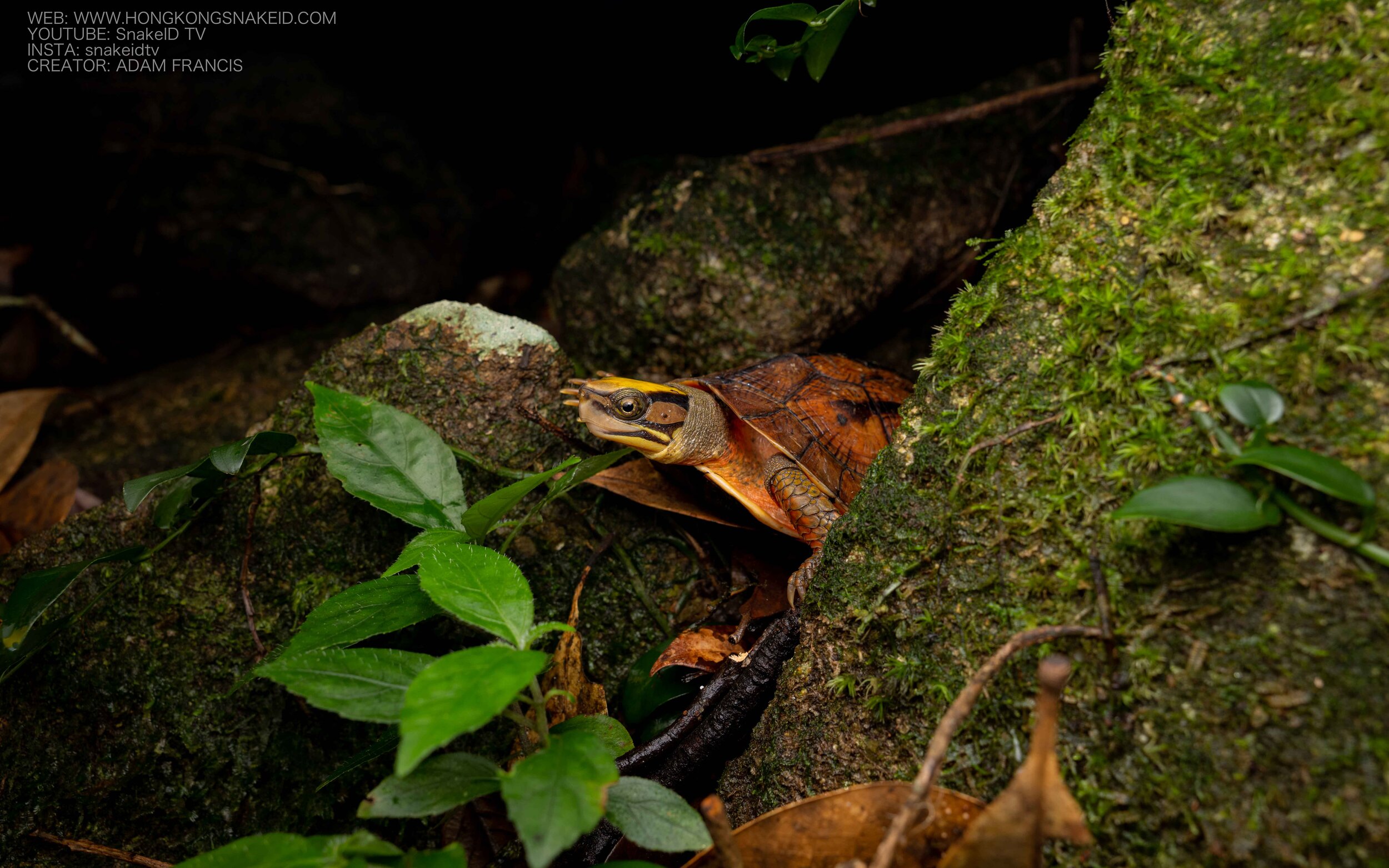
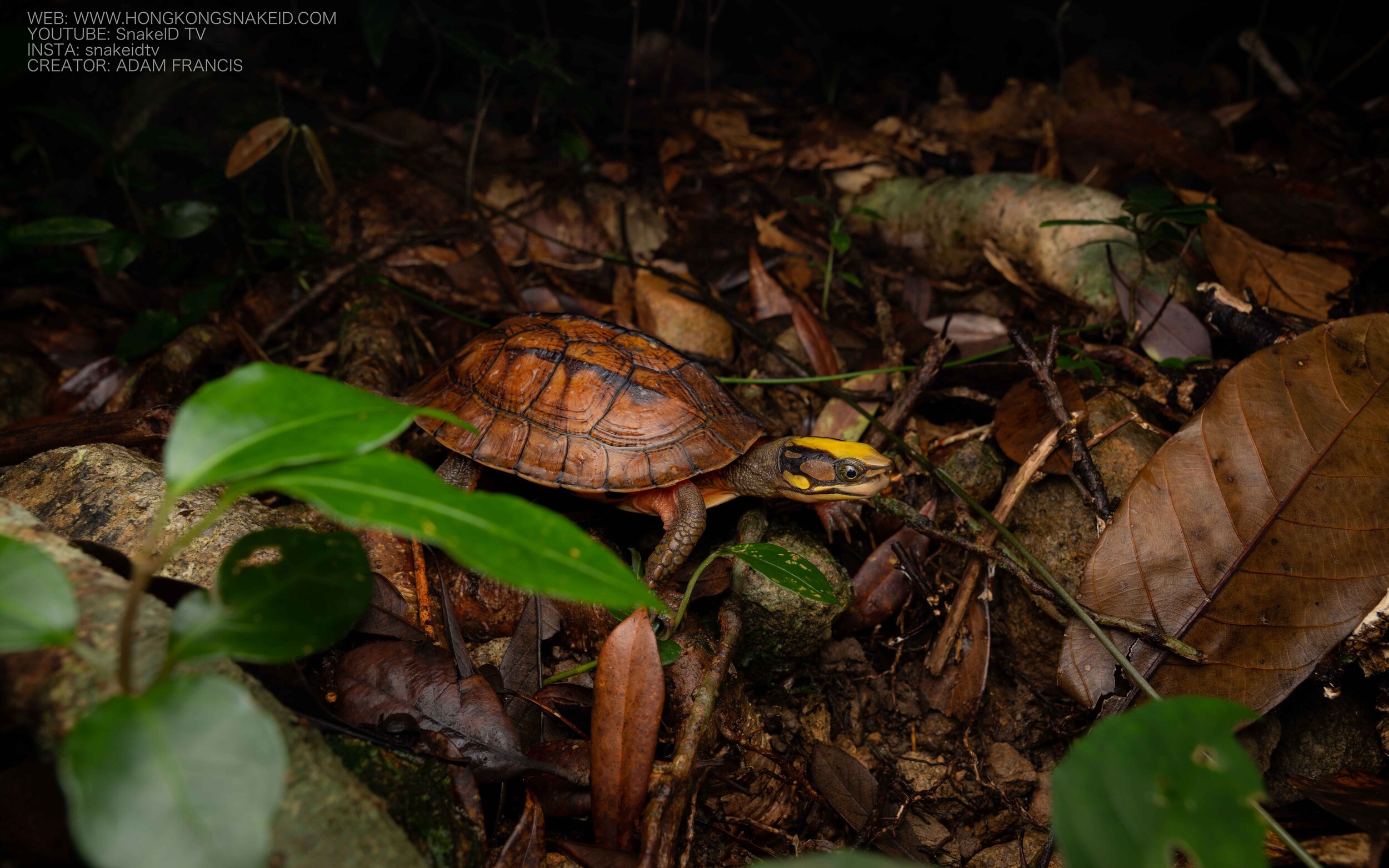
DESCRIPTION
Medium in size when fully grown, mature Golden Coin Turtles shell can reach upwards of 10 inches long. This species has very vibrant coloration with birght yellow heads that have richly contrasting black, tan and yellow facial markings with reddish pink bodies and reddish brown shells with three black longitudinal stripes. The plastron (belly shell) is black with light yellow/cream edges and is hinged at both ends allowing for the shell to completely close around the body. Apendiges are slightly thinner than fully terrestrial turtles and indicative of their semi acquatic adaptations.
BEHAVIOR
Observed to be active during evenings and afternoon/morning transition periods, the Golden Coin Turtle appears to prefer spending large portions of its time on land while moving into bodies of water when searching for food. Highly adept at climbing rocks in mountain streams, they are also capable of quickly burrowing in to leaf litter and soft soil where it is thought they spend their time resting. Observed by the authors to enjoy eating fish, freshwater crabs and worms, it is thought they also consume insects and carrion opportunistically.
HABITAT
Populations of this species in the wild are so small, little is known about their preferred habitat, but they are thought to inhabit areas around mountain streams in thickly vegitated forests at varying elevations. Given thier semi aquatic nature they will likely always be found very close to bodies of water. The authors have encountered a single specimen near a mountain stream partially in water.
POACHING
TURTLES ARE HEAVILY TRAFFICKED IN HONG KONG: Poachers, unfortunately are still very active in Hong Kong, regularly trapping rare turtle species to sell to the pet and Chinese Medicine trade. Turtles that end up sold into this trade are killed to become ingredients in traditional medicines. To avoid unintentionally aiding poachers, locations of turtles found in Hong Kong should never be shared on social media, and individuals should never be collected as pets given the potential for disruption to local breeding populations.

